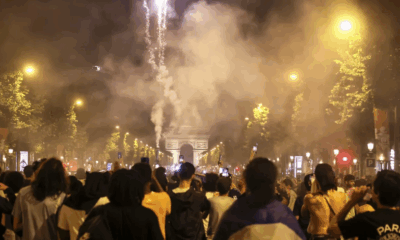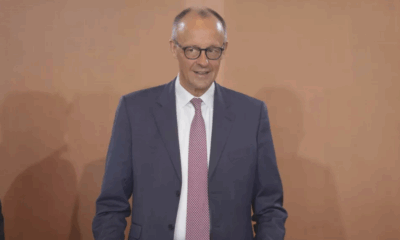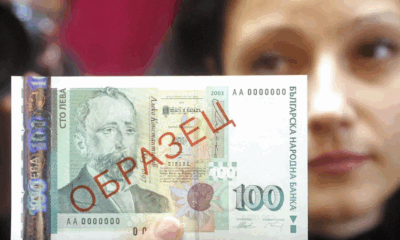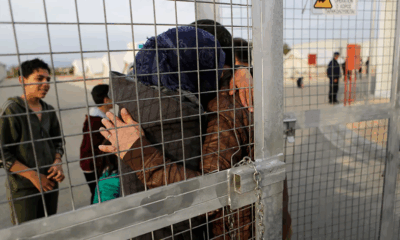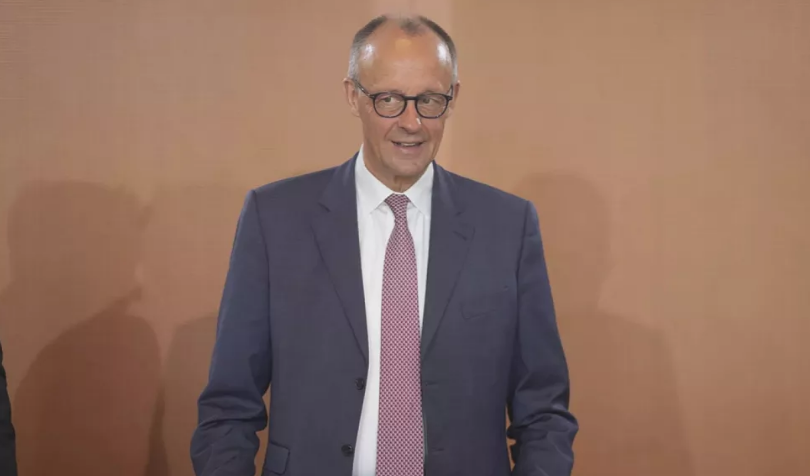News
Loy Krathong Festival to Illuminate Thailand with Tradition and History This November
As Thailand prepares to celebrate Loy Krathong on November 15, the annual festival will once again see thousands of people gathering by rivers, lakes, and ponds to release decorative floats, or “krathongs,” as an offering to the water goddess. Observed on the full moon of the 12th month in the Thai lunar calendar, this enchanting tradition is one of Thailand’s most beloved cultural events, attracting locals and tourists alike to experience the beauty of light and water.
Though Loy Krathong events take place across Thailand, the most significant celebration is held in Sukhothai, a UNESCO World Heritage Site and former capital of the Kingdom of Siam. Sukhothai’s week-long Festival of Lights features grand parades, fireworks, and light shows that transform the city’s ancient monuments, creating a dramatic display against the backdrop of historic temples and serene ponds. This immersive experience allows visitors to explore the city’s heritage with an unforgettable ambiance of celebration.
Sukhothai’s historical significance lies in its role as the first capital of Siam, dating back to the 13th and 14th centuries, before Ayutthaya became the new capital in 1438. The Sukhothai Historical Park, which houses well-preserved Buddhist monasteries and examples of early Thai architecture, draws visitors from around the world. Wat Mahathat, the centerpiece of the park, and Wat Si Chum, with its iconic seated Buddha, are among the must-see landmarks.
“The first impression for many tourists visiting Sukhothai is how peaceful it is, how the local lifestyle coexists harmoniously with the historical sites,” says Sirawee Lamsudjai, a cultural officer at Sukhothai’s Ramkhamhaeng National Museum. “The city has retained its charm and offers a unique glimpse into Thai culture and history.”
Sukhothai is also recognized for its innovations, particularly in water management. The ancient city’s hydraulic engineering system included a network of reservoirs, ponds, and canals that supplied water for agriculture, daily life, and religious rituals. UNESCO praises this early engineering as a testament to the advanced knowledge of water management in ancient Siam.
While Sukhothai is often considered the birthplace of Loy Krathong, historians debate its origins. Tongthong Chandransu, a historian specializing in Thai cultural history, notes that although candle and firework festivals were documented, early records do not mention krathongs specifically. Instead, it is believed that the ritual evolved over time, with the floats symbolizing gratitude to Phra Mae Khongkha, the Goddess of Water, for the essential role water plays in Thai life.
Today, concerns about environmental sustainability have led to the development of biodegradable krathongs made from bread or natural materials, as traditional banana plant floats accumulate waste in waterways. Some participants opt for virtual krathongs or use pools to celebrate without affecting local ecosystems.
With its rich history, cultural depth, and stunning display of lights, Loy Krathong remains a cherished Thai tradition, offering a unique look into the country’s heritage. Sukhothai, located six hours by car or an 80-minute flight from Bangkok, is a particularly atmospheric setting for the festival. For those interested in history, the Ramkhamhaeng National Museum near the historical park exhibits artifacts unearthed during excavations, adding context to the city’s storied past.
As the full moon rises over Thailand’s waters, Loy Krathong will continue to enchant visitors, symbolizing the beauty of tradition in harmony with nature.
News
Two Dead, Nearly 200 Injured as PSG Title Celebrations Turn Violent Across France

What began as jubilant celebrations of Paris Saint-Germain’s historic UEFA Champions League victory ended in violence and tragedy in parts of France, with two people killed and nearly 200 injured during street festivities that spiraled out of control.
Authorities confirmed on Sunday that a 17-year-old boy was fatally stabbed in the southwestern town of Dax during a PSG street gathering, while in Paris, a man died after his scooter was struck by a car amid the crowded celebrations. Both incidents are currently under investigation.
The unrest followed PSG’s dramatic win in Munich, where the club secured its first-ever Champions League title, marking a milestone in French football history. While fans across the country took to the streets to celebrate, several areas descended into violence.
According to the French Interior Ministry, a total of 294 people were arrested nationwide as of 2 a.m. Sunday. Of the nearly 200 injured, 21 were police officers—18 of them in Paris alone. One officer remains in a medically induced coma after being struck in the face by a firework.
Interior Minister Bruno Retailleau condemned the violence in a statement on social media. “True PSG fans are celebrating a magnificent achievement. Meanwhile, barbarians have taken to the streets to commit crimes and provoke law enforcement,” he said. “It is unacceptable that people cannot celebrate without being endangered by a violent minority.”
Despite the unrest, the majority of gatherings were peaceful, authorities noted, with large crowds celebrating the historic win in cities including Marseille, Lyon, and Lille.
The PSG squad returned to Paris from Munich on Sunday afternoon aboard a Qatar Airways charter flight, arriving at 4 p.m. The team is expected to continue celebrations in the capital with tens of thousands of fans, under heightened security measures.
The violent turn of events has reignited debate in France over crowd control during major sporting celebrations, and how best to ensure public safety without dampening national enthusiasm.
PSG’s Champions League triumph marks a defining moment for the club, which has long pursued European glory. As the team prepares for a hero’s welcome, officials are urging fans to celebrate responsibly and respect public safety.
News
Ukraine Launches Major Drone Assault on Russian Airfields, Hits Over 40 Strategic Bombers

Ukraine’s Security Service (SBU) has claimed responsibility for a large-scale drone strike on four Russian air bases over the weekend, targeting dozens of strategic bombers across vast swaths of Russian territory — from Siberia to the Arctic.
According to Ukrainian officials, the operation, codenamed “Spiderweb” (Pavutyna), was launched on June 1 and struck 41 long-range bombers stationed at airfields in Russia’s Ryazan, Ivanovo, Irkutsk, and Murmansk regions. The attack is being hailed by Kyiv as one of its most ambitious and far-reaching strikes since the beginning of Russia’s full-scale invasion.
“Enemy strategic bombers are burning en masse in Russia,” a senior SBU official said, noting that the operation was specifically designed to cripple Moscow’s airstrike capabilities. “This is a large-scale special operation aimed at destroying enemy bomber aircraft.”
The four airfields targeted were Dyagilevo in the Ryazan region, Ivanovo in central Russia, Belaya air base in Irkutsk — over 4,000 kilometers from the front lines — and Olenya air base on the Kola Peninsula near the Arctic, roughly 2,000 kilometers from Ukraine’s border.
Ukrainian officials described the complex logistics of the operation, which involved covertly transporting drones deep into Russian territory, hiding them until the time of launch, and remotely executing the strikes. While specific details remain classified, Ukraine previously revealed it had developed drones with a flight range of up to 3,000 kilometers, enabling long-range operations like this.
Satellite imagery analyzed after the attack shows the presence of several high-value Russian aircraft types at the affected bases, including the Tu-95, Tu-22M3, Tu-160, and A-50 radar planes. These aircraft have been central to Russia’s long-range missile campaign against Ukraine.
The Tu-22M3, for example, is capable of carrying Kh-22 and Kh-32 cruise missiles at speeds exceeding Mach 4. The Tu-95, a Cold War-era bomber once designed to carry nuclear weapons, has been retrofitted to launch conventional cruise missiles. The A-50 aircraft provides airborne radar surveillance and target coordination for Russian forces.
The scale of the strike underscores Ukraine’s growing long-range capabilities and signals a shift in Kyiv’s strategy to disrupt Russian air operations at their source. President Volodymyr Zelenskyy said he had held meetings with the Ministries of Defense and Foreign Affairs, along with the General Staff and SBU, to coordinate further defense and counter-offensive planning.
There has been no immediate official response from Moscow regarding the extent of damage caused.
News
German Chancellor Merz to Meet President Trump in Washington Amid Global Tensions
-
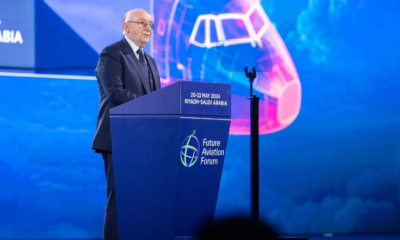
 Business1 year ago
Business1 year agoSaudi Arabia’s Model for Sustainable Aviation Practices
-

 Business1 year ago
Business1 year agoRecent Developments in Small Business Taxes
-
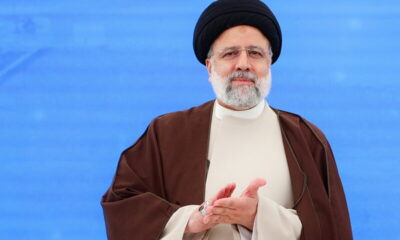
 Politics1 year ago
Politics1 year agoWho was Ebrahim Raisi and his status in Iranian Politics?
-

 Business11 months ago
Business11 months agoCarrectly: Revolutionizing Car Care in Chicago
-
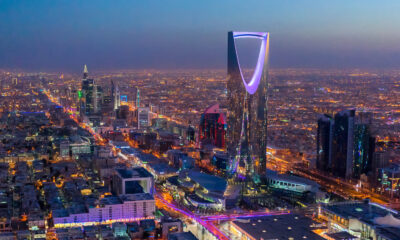
 Business11 months ago
Business11 months agoSaudi Arabia: Foreign Direct Investment Rises by 5.6% in Q1
-

 Technology1 year ago
Technology1 year agoComparing Apple Vision Pro and Meta Quest 3
-
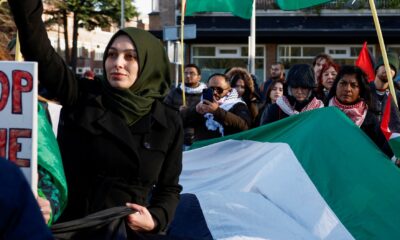
 Politics1 year ago
Politics1 year agoIndonesia and Malaysia Call for Israel’s Compliance with ICJ Ruling on Gaza Offensive
-

 Sports10 months ago
Sports10 months agoKeely Hodgkinson Wins Britain’s First Athletics Gold at Paris Olympics in 800m

